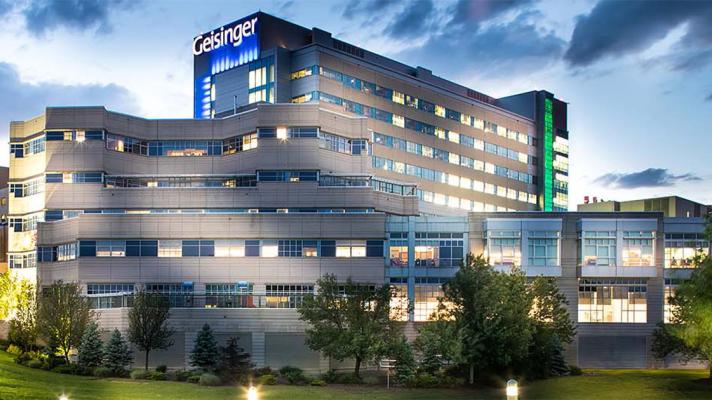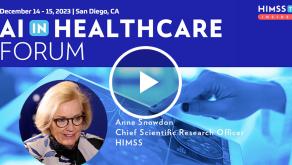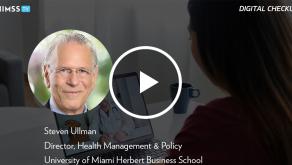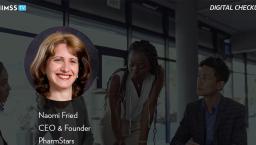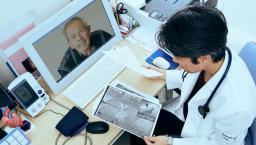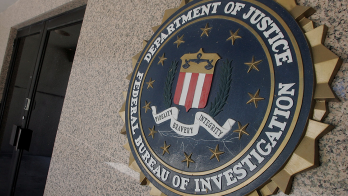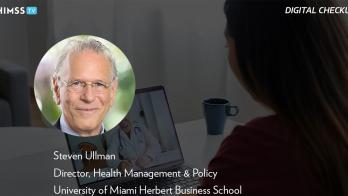Upswing Health combines AI and telehealth to improve MSK care and cut costs

Dr. Steve Schutzer, cofounder and COO at Upswing Health
Photo: Dr. Steve Schutzer
Musculoskeletal (MSK) is routinely one of the three most expensive categories of care (along with cardio-metabolic disease and cancer care). Dr. Steve Schutzer, an orthopedic surgeon for 34 years, is working on this pain point as cofounder and COO of Upswing Health, a virtual clinic for MSK/orthopedic problems.
THE PROBLEM
"More than one in two Americans will seek attention for an MSK event each year," Schutzer said. "This has created a massive burden on the U.S. healthcare system. The total addressable MSK market is now approaching $800 billion in aggregate direct and indirect cost annually. Unfortunately, 25-40% of that care has been attributed to waste and inefficiency, and to low-value, no-value or even harmful interventions."
Upswing Health’s founders, Schutzer and Dr. Jay Kimmel, set out to tackle this vast problem by reinventing MSK care delivery. Based on their years of practice experience, they concluded they needed to "blow it up," revolutionize and start over, rather than tinker with it at the edges.
Instead, they purposefully designed Upswing Health around how they believed contemporary MSK care should be provided to patients.
"The essential and most exigent problem to solve was also the most basic – access to care," Schutzer said. "The average wait time to see a physician in the U.S. now stands at 26 days, and for some specialists as long as 42-63 days. Undoubtedly compounding this unacceptable state of affairs, the Bureau of Health Workforce has predicted a shortage of nearly 82,000 physicians, including more than 5,000 orthopedic surgeons, by 2035.
"But patients who develop acute MSK problems need more than access, they need immediate and convenient access," he added.
Schutzer offered this case in point.
"You’re out for a hike with some friends when you trip over a stump and roll your ankle," he said. "What are the first two urgent questions that enter your mind? 1) What did I just do, and 2) Where do I need to go. You need answers to these questions fast. Often this leaves you no choice but to seek initial care in an ER or urgent care – and face long wait times and high out-of-pocket costs.
"It was abundantly clear that alternative solutions would need to be put into practice," he added.
PROPOSAL
To solve the need for immediate access to care, the founders concluded Upswing’s platform would put smart technology first so MSK patients could have answers to their questions within minutes – from wherever and whenever their problem occurred, 24/7/365.
"Along with our team of healthcare professionals, we built a one-of-a kind unique MSK-specific symptom assessment tool," Schutzer explained. "Using decision-tree logic that replicates the traditional doctor-patient office interaction, we created algorithms for more than 160 different MSK conditions.
"Patients first answer a series of intuitive questions about their injury and then within seconds are given a differential list of possible injuries and conditions they may be experiencing," he continued. "They are then connected to curated, injury-specific content pages where they can read about their condition and learn when they need to see a doctor or go to an emergency room."
They are also given advice and self-help tips and rehabilitation tools to start them on the path to recovery. The sensitivity of Upswing’s algorithms has been tested in practice with orthopedic surgeons and physician assistants and has a 75% concordance rate for diagnostic accuracy, Schutzer reported.
"Upswing is now in the final stages of refining the next version of our symptom assessment tool, which we anticipate will further improve diagnostic accuracy," he said. "This will employ machine learning to access the world’s literature on specific features of MSK conditions and also apply natural language processing to analyze the patient’s responses.
"It will include elements of the physical examination and even uploads of the patient's diagnostic imaging reports," he continued. "We expect with increased use, AI will improve accuracy by processing and analyzing large volumes of data, learn from the pattern of patients' responses, and make predictions and decisions based on that data. We anticipate release of this updated product in Q1 2024."
To further strengthen and enhance the technology and virtual offerings, Upswing recently partnered with Xtravision.ai. Xtravision harnesses large language models and machine learning powered by generative AI to predict acute and chronic MSK conditions. The company's motion tracking technology also generates in-depth data on range of motion, strength, balance and other biometrics for better decision-making in common MSK conditions.
"We will be integrating this technology and predictive analytics with our coaches and telehealth platform as the foundation for our new all-virtual spine injury prevention program launching later this year," Schutzer noted.
But Upswing’s technology was not enough. The founders knew patients often want more – they want to talk to a real person. So, they decided to complement Upswing’s AI-first technology with a virtual care component and built a telehealth platform with access to the company's frontline coaches (certified athletic trainers) 12 hours a day, 7 days a week, or with Upswing’s orthopedic specialists within 24 hours.
"This hybrid approach satisfies the demand for immediate access to care by harmonizing elegant smart technology with compassionate and intelligent human relationships," Schutzer said.
MARKETPLACE
There are many vendors of telemedicine technology and services on the health IT market today. Healthcare IT News published a special report highlighting many of these vendors with detailed descriptions of their products. Click here to read the special report.
MEETING THE CHALLENGE
Upswing’s platform was launched in late 2019 just prior to the COVID-19 pandemic. It has been deployed in two distinct markets. In the direct-to-consumer market and in the self-funded employer B2B space.
"Given the timing of our launch, the virtual platform served as an important resource for patients with MSK problems when no other options were available," Schutzer explained. "During the early days of the pandemic when our population was in lockdown mode and brick-and-mortar appointments with providers were shut down, thousands of patients accessed Upswing’s technology at no cost, and many managed their problems independently.
"In fact, to this date, between 2,000 and 2,500 patients a day from around the world come to Upswing Health for this important information and guidance – nearly 1.47 million in all," he reported. "The site has been so popular that without any D2C marketing initiatives, 10 of Upswing’s MSK conditions are listed No. 1 by Google SEO analytics – ahead of WebMD, Cleveland Clinic and other notable MSK sites – and on the first page for another 60."
In January 2023, Upswing was selected by a large self-funded employer (a state health plan) to manage the MSK needs of its 225,000 members and beneficiaries. The goals of this engagement were to use Upswing’s virtual front door to MSK care to: 1) Align the patient care journey from their "ouch moment" to recovery, 2) Provide a gratifying patient experience, 3) Provide excellent clinical outcomes, and 4) Reduce utilization of MSK services leading to predictable cost savings.
RESULTS
To date, including a preliminary pilot program with this large employer, nearly 800 patients have used the Upswing all-virtual platform.
"As a testament to the success of this model, patients who have used Upswing instead of traditional MSK approaches to care have consumed 38% fewer MSK services overall – 61% fewer injections, 49% less surgery, 46% fewer physical therapy/chiropractic visits, 30% less imaging, 25% fewer ER visits and 21% fewer doctor visits – and saved the client an estimated $1,100 per engaged member," Schutzer reported.
"Eighty-one percent of the patients have had their problems resolved using technology and Upswing’s coaches alone while 19% also had a telehealth visit with an Upswing orthopedic specialist," he continued. "Despite the fact that 71% of the patients had experienced an exacerbation of a chronic MSK condition, there was a 51% reduction in chronic patients with an episode length of just 52 days."
Finally, as a measure of patient experience and satisfaction, Upswing’s most recent net promotor score is 84.
ADVICE FOR OTHERS
"Some of the problems facing patients with MSK problems, in fact, are not unique – and plague patients in the general population with a range of health conditions," Schutzer noted. "Access to quality care, problems with misaligned and disjointed adventures riddled with gaps in care, and lack of affordability are now, unfortunately, endemic in U.S. healthcare.
"We must do better as a nation – and the time is now," he continued. "Legacy models have failed to meet even the most basic health needs of our population who continue to struggle with these issues. There is growing and widespread concern today that 'financial toxicity equals health toxicity' – we must do better."
Going forward, technology-enabled models that hybridize a smart AI-derived symptom assessment tool (that can provide patients with immediate insights into the nature of their health condition and then manage or triage patients appropriately) with the human touch that builds on relationships and natural design would seem to offer a compelling and viable solution to these deep-rooted problems, Schutzer said.
"As healthcare organizations begin to pivot from traditional fee-for-service reimbursement models to accountable care and assume financial risk for outcomes and population health, it would seem prudent that they adopt this approach and exploit the recognized benefits of these emerging and scalable technologies, which will only continue to evolve over time," he concluded.
Follow Bill's HIT coverage on LinkedIn: Bill Siwicki
Email him: bsiwicki@himss.org
Healthcare IT News is a HIMSS Media publication.




